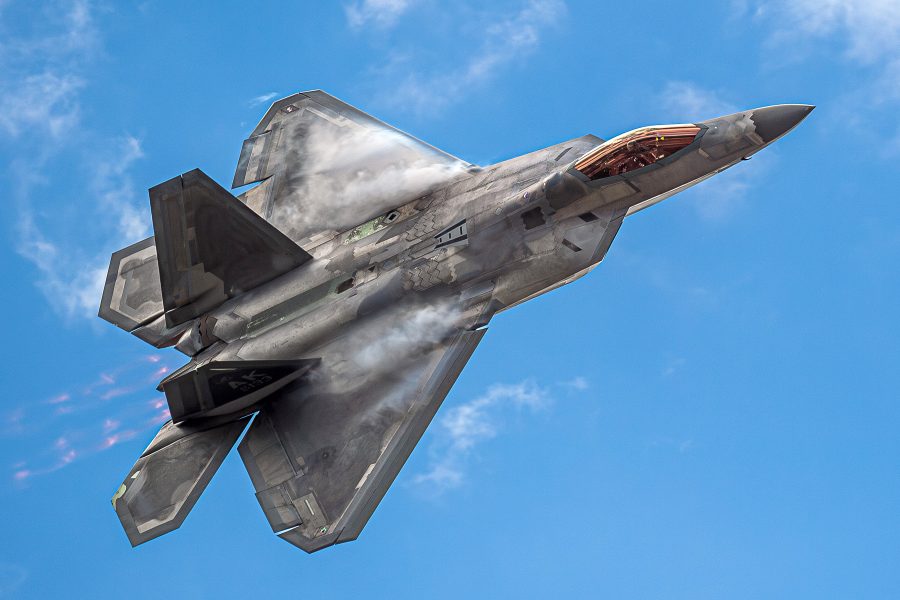Aircraft readiness declined across the Air Force fleet in 2024, dropping to its lowest level in at least a decade and perhaps 20 years, according to data provided to Air & Space Forces Magazine.
The average mission capable rate for all USAF fleets was 67.15 percent in fiscal 2024, down from 69.92 percent in fiscal 2023 and 71.24 percent in fiscal 2022. Compared to 2004-2006 and 2012-2024, years for which data was available, the 2024 rates were the lowest.
These rates represent a non-weighted average of all the fleets. A weighted average could be somewhat better, as the most challenged fleets are among the smallest in USAF’s inventory.
An aircraft is “mission capable” when it is able to perform at least one of its several core missions. For example, the F-35A’s missions include counter-air, electronic warfare, ground attack, and data collection, so to be mission capable, an aircraft must be able to execute at least one of those missions. The Air Force does not disclose full-mission capable rates, which measure aircraft types’ readiness to conduct all assigned missions.
The Air Force changed its metrics of mission capability in recent years, saying that it employs a formula that also includes the availability of trained aircrew and maintenance personnel, spares and other factors. Those metrics vary from platform to platform. The Air Force also gives spares and support priority to aircraft deploying to forward locations versus those remaining at home station. Deployed aircraft typically have much higher MC rates.
Among 65 aircraft types in fiscal 2024, rates ranged from a low of 30.45 for the CV-22 to 100 percent for, among others, the C-21 and MC-12. Historically, rates of 75 to 80 percent have been deemed acceptable.
Rates declined for 29 aircraft types and improved for 26 others. The rest saw no change. In all, four fleets were at 100 percent: C-12, C-21, MC-12, and UV-18.
Bombers
All three Air Force bomber fleets were mission capable less than half the time. The B-1B’s rate improved slightly, but the B-2 and B-52 rates declined slightly, all within 1.5 percent of last year’s values.
Fighters
Rates for the aging F-15C and D fleets rose from 33 and 55 percent, respectively, to 52.9 and 63.7 percent as the oldest, worst-performing aircraft were retired. The new F-15EX, with just eight aircraft, managed an 83.13 percent rate.
F-22 readiness fell from 52 percent to just 40.19 percent; it had been at 57.4 percent two years ago. The Air Force sought to divest its 32 least-capable F-22s in recent years, but Congress has blocked that move until at least 2028.
The mission capable rate for the F-35A held steady, inching up a half percentage point to 51.5 percent., possibly benefitting from increased spare parts availability as delivery was held up for scores of new aircraft throughout fiscal 2024.
Mobility
The mobility fleet had some of the highest rates overall—with most types in the 75-100 percent range. The C-5M Galaxy managed to improve on its ’23 rate of 46 percent, raising it to 48.6 percent, but still lower than 2022. The Galaxy recently completed a 10-year, $10 billion upgrade program for its engine, structures, and avionics, but its mission capable rate has remained stubbornly low. Program managers have said the C-5 suffers from parts shortages owing to “vanishing vendor” syndrome, and they are in a push to improve its readiness to 55 percent, called “Drive to 55.”
The Air Force’s fleet of aerial refueling aircraft all turned in rates in the 60-70 percent range. The rate for the KC-46 declined to 61.05 percent, down from 65 percent the previous year.
The MC-130H registered a zero percent rate, while the trainer TC-130H turned in 13.72 percent, as those aircraft are being divested.
Special Mission and ISR
The CV-22 Osprey, which was grounded for a significant chunk of 2024 after a deadly crash, only managed a 30.45 percent mission capable rate rate.
The new MH-139A Grey Wolf helicopter, still in development, recorded its first ever rate of 40.63 percent.
The worst-performing in the ISR fleet was the EC-130H, but it actually raised its rate from 33 percent in 2023 to 41.97 percent in 2024. It is being replaced by the EA-37.
The RQ-4 Global Hawk drone saw a significant jump in mission capability, from 50 percent last year to 64.59 percent in fiscal 2024.
The E-3G AWACS, slated for replacement later this decade by the E-7 Wedgetail, lost ground, declining to just a 55.68 percent rate, while the E-4B Nightwatch, which has had a series of maintenance issues in the last few years and for which a replacement is also in development, raised its rate slightly from 60 percent from 61.17 percent.
Trainers
While the T-1A saw a modest increase in mission capable rates, most of the rest of the trainer fleet saw declines, including the AT-38 and T-38. The rate on the T-6 Texan II, which most student pilots fly, dropped nearly 10 points to just 53.43 percent. The Air Force has faulted the low mission capable rates of its trainer aircraft among the reasons for lagging pilot production in recent years.


